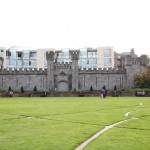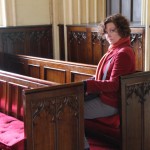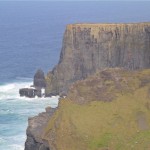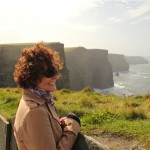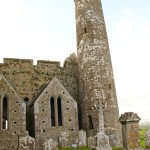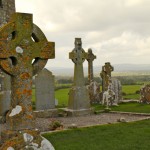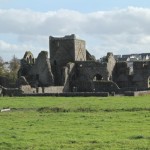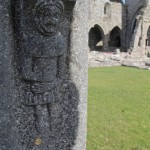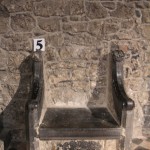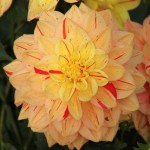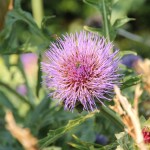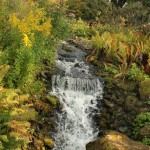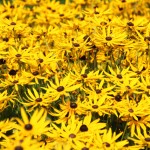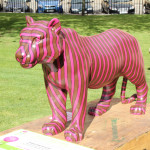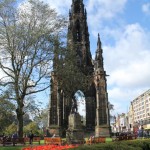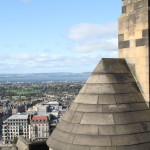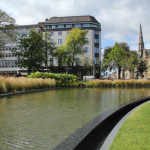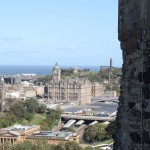Who? Yeah, me too. More about Mr. Beatty in a minute. Our expectation for our first full day in Dublin was to see Trinity College and its treasures, Dublin Castle, Christ Church Cathedral and the Irish version of St. Patrick’s Cathedral and some other strolling around. But our day did not go quite as we expected.
We did start at Trinity College and when we were there it was the crazy first day of the new school year (i.e. women’s restroom lines at the student center) as indicated by the “Welcome Freshers” banner. But why are we here? Well to see the Book of Kells of course. You, like me (or perhaps you got a better education than I did), might ask “What is the Book of Kells?” My first lesson of the day. The Book of Kells was a very beautiful work of monks before the 9th century consisting of the four Christian gospels written in Latin. But you can see those anywhere and who knows if they even copied the text correctly. This work is spectacular as a work of art for the incredible calligraphy and graphics these fellows used to put this document together. You could just sense the intense level of writers’ cramp that must have gone on to produce this book.
http://www.tcd.ie/Library/bookofkells/book-of-kells/
So that was an outstanding find. But before leaving this campus that dates to the late 16th century, we also visited the library, or more specifically the Long Room of the library. It is over 200 feet long and two stories tall with over 200,000 antique books and other antiquities. These previously unknown to us discoveries plus a campus tour could have made the day a success on their own. http://www.tcd.ie/Library/bookofkells/old-library/
But on to Dublin Castle. Not a big deal because the only part of the original 13th century castle remaining is the Record Tower from 1226. There is a nice chapel with beautiful organ pipes but that is a mere 197 years old which barely makes the guidebooks for this part of the world.
But a lovely area behind the castle takes us back to Mr. Beatty. There is his Chester Beatty Library which alone justifies a trip to Dublin. We spent the entire afternoon visiting this man’s collection. Collection of what? To quote the brochure: “Its rich collection of manuscripts, prints, icons, paintings, early printed books and objects d’art from countries across Asia, the Middle East, North Africa and Europe dating to 2700 BCE offers visitors a visual feast. Egyptian papyrus texts, beautifully illuminated copies of the Qur’an, the Bible, medieval and renaissance manuscripts…” and on and on. For example, he has pages of the oldest found versions of the Christian Bible. We arrived after lunch and got kicked out at closing time.
Here is the kicker for me. This man was an American. Born in New York in 1875, educated as a mining engineer at Columbia, worked the mines in Colorado for five years and became a millionaire there, spent most of his career in England beginning around 1911 and then moved to Dublin in 1950. He collected these things all of his life and the volume of fascinating items is incredulous. Ignorant me never heard of him until today. He gave it all to the Irish people when he died.
Put the Chester Beatty Library on your bucket list. www.cbl.ie














